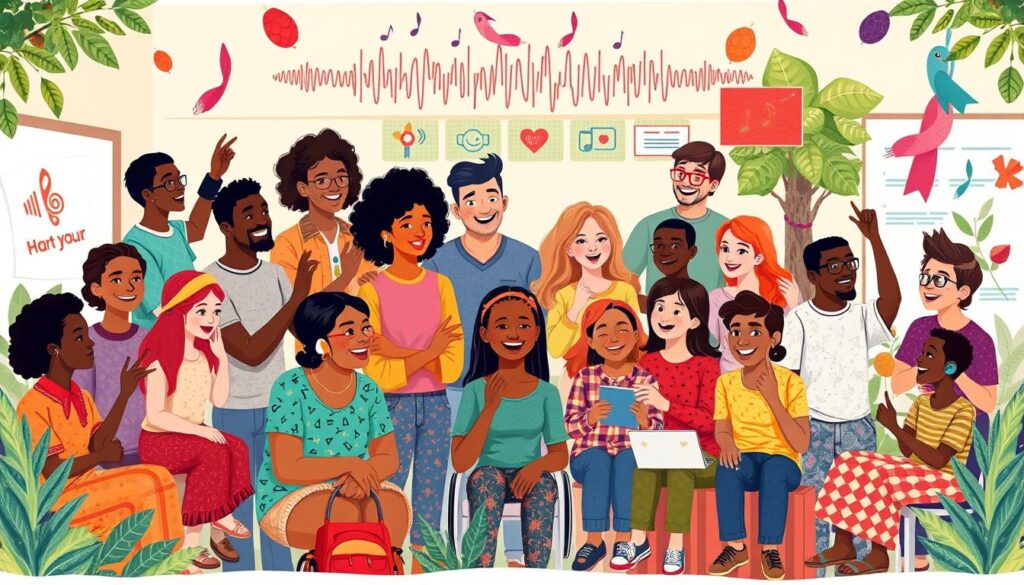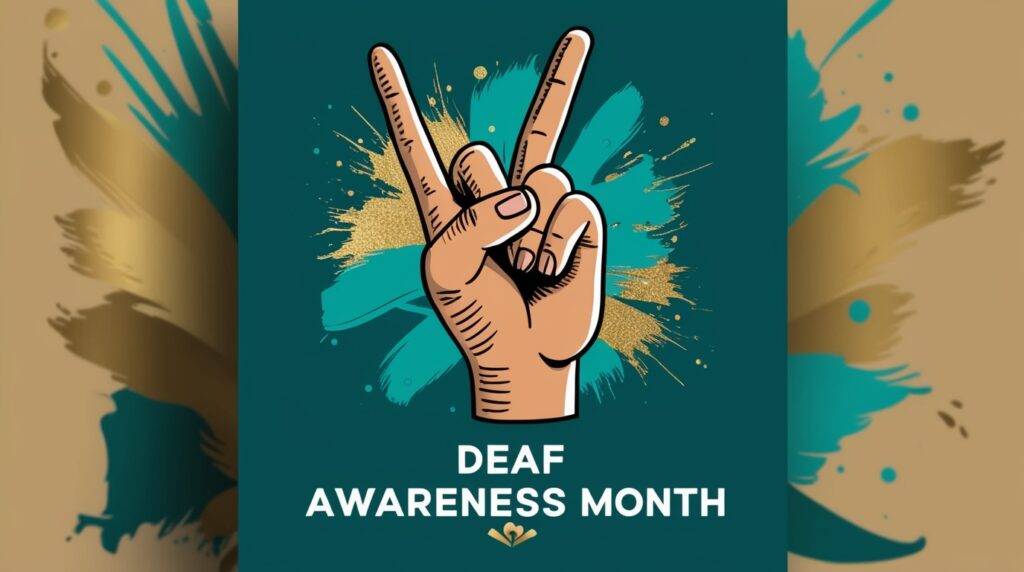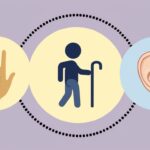Hearing Impaired Awareness Month
By joining this important movement, you help make places more welcoming for those with hearing disabilities. But have you ever thought about the rich history and diversity of Deaf culture?
In addition to raising awareness, it’s important to remember that hearing issues like tinnitus can also impact daily life. If you’re dealing with constant whooshing, buzzing, or clicking, there’s a product that promises 20/20 hearing and improved brain function. Learn more about how this solution can help here.
Key Takeaways
- National Deaf Awareness Month is observed every September to promote understanding and inclusion.
- Approximately 13% of the U.S. population is deaf or hard of hearing, yet misconceptions about the Deaf community persist.
- Deaf culture is highly diverse, with over 300 different sign languages used globally.
- Deaf individuals have made significant contributions throughout history, from sports to entertainment.
- Supporting Deaf awareness can lead to more accessible and equitable environments for all.
Introduction to Deaf Culture and Awareness
Language and Communication
The Deaf community has its own deaf culture, language, and identity. American Sign Language (ASL) is key, with its own rules and structure. It’s a visual language that helps Deaf people communicate and feel connected.
It’s important to know the difference between “deaf” and “Deaf”. “Deaf” refers to hearing loss, while “Deaf” is about Deaf culture. Hearing people should respect Deaf cultural norms when interacting with the Deaf community.
Clear communication is vital when talking to Deaf people. Deaf culture supports bilingual education, using ASL and English. This ensures Deaf individuals get the same access to knowledge as hearing people.Additionally, for those dealing with hearing loss and tinnitus, exploring options like the one offered here can lead to better hearing and cognitive function.
The Deaf community values strong connections and using technology to solve communication problems. Learning about deaf awareness and Deaf culture helps create a more welcoming society. It celebrates the diversity and contributions of the Deaf community.
“Deaf culture promotes visual transmission of information through various means such as lighting, open floor plans, and spatial positioning of furniture.”
Historical Milestones and Pioneers
Deaf Awareness Month honors the deaf community’s rich history and achievements. A key moment was the founding of the American School for the Deaf in 1817. It was the first public school for the deaf in the U.S., starting deaf education and sign language preservation.
In 1864, Gallaudet University was established. It’s the world’s only liberal arts university for the deaf and hard of hearing. This university has been a key place for education, advocacy, and empowerment for the deaf community.
The Deaf President Now movement in 1988 was a turning point. It led to the first deaf president, Irving King Jordan. This event showed the deaf community’s fight for equal rights and self-determination.
These milestones show the long journey towards equality and inclusion for the deaf community.
Pioneers like Kitty O’Neil, Juliette Gordon Low, Gertrude Ederle, and Nellie Zabel Willhite have made big contributions. They broke barriers and inspired many. Their stories highlight the deaf community’s resilience and determination.
Preserving Deaf Culture and Language
The deaf community’s cultural heritage is celebrated, including the unique sign language from Martha’s Vineyard. But, the “oralist” era’s suppression of sign language was a dark time. It shows the need for ongoing awareness and advocacy.
- The American School for the Deaf was founded in 1817, paving the way for deaf education.
- Gallaudet University was established in 1864 as the world’s first liberal arts university for the deaf and hard of hearing.
- The Deaf President Now movement in 1988 led to the appointment of the university’s first deaf president, Irving King Jordan.
These milestones and pioneers inspire us to keep moving forward. They show us the path to a more inclusive future.
hearing impaired awareness month: Educating and Promoting Inclusion
September is Deaf Awareness Month. It’s a time to celebrate the Deaf community and work towards better understanding and access. This month has grown from a week in the 1990s to a full month. It aims to teach the public and fight for deaf and hard-of-hearing rights.
Even with progress in deaf education, deaf accessibility, and deaf inclusion, many challenges remain. American Sign Language (ASL) is not well-known, affecting 500,000 to 2 million people in the U.S. The deaf rights movement pushes for more recognition in media, jobs, and daily life.
The Americans with Disabilities Act has helped a lot. It made sure there’s more captioning and ASL interpreters. But, there’s still more to do to include the Deaf community fully.
Deaf Awareness Month shines a light on deaf culture and deaf achievements. There’s been progress in tech, like real-time captions and AI apps. Deaf people are also being seen more in media.If you’re struggling with hearing loss or tinnitus, there are ways to improve your hearing and brain function—explore more here.
This September, think about helping local Deaf groups, going to educational events, or learning sign language. By doing so, we can help break down barriers and make the world more inclusive for everyone.
“Deaf Awareness Month is not just about raising awareness, but about celebrating the richness and diversity of the Deaf community.” – Jane Doe, Director of the National Association of the Deaf

Interaction Etiquette and Tips
To have good interactions with the deaf or hard of hearing, follow some key rules. Always get their attention before you speak. Face them directly and speak clearly but not too loudly. Be patient if it takes time to communicate.
Don’t make assumptions and be open to learning about deaf culture. This makes everyone feel welcome.
Respectful Communication
When talking to deaf or hard of hearing people, remember a few important things. Always get their attention first. You can do this by waving your hand or tapping their shoulder.
Keep eye contact to help them read your lips and facial expressions. Speak clearly and at a normal pace. Use simple words to make it easier to understand.
Don’t shout, as it can be seen as rude. If they’re having trouble, wait and try again. You can write it down or use gestures.
Deaf people have different ways they like to communicate. Some like sign language, while others prefer lip-reading or speaking. Asking how they prefer to communicate can make a big difference.
Learning basic sign language phrases is a nice gesture. It shows you want to connect. Also, think about the lighting and sound in the room. It can help with communication.
By following these tips and being open and respectful, you can have great interactions with the deaf and hard of hearing community.
Celebrating Deaf Culture and Achievements
Deaf Awareness Month is a time to honor the deaf community’s culture, language, and achievements. The community has made significant contributions, from art to sports. Seeing these achievements inspires future generations and promotes inclusion.
The deaf community is rich and diverse, with its own traditions and language. American Sign Language (ASL) is at the heart of their identity. Taking online ASL classes can improve communication and foster inclusivity.
During Deaf Awareness Month, we celebrate talented deaf individuals. Artists like Chuck Baird and filmmakers like Deanne Bray showcase the deaf experience. Athletes, such as Derrick Coleman, break stereotypes and inspire others.
Deaf influencers, like Nyle DiMarco and Chrissy Marshall, raise awareness and celebrate deaf culture. Deaf actors, including Marlee Matlin and Troy Kotsur, bring authentic representation to media.
Let’s remember to use empowering terms like “Deaf” and “hard of hearing” (HoH) during Deaf Awareness Month. Celebrating the deaf community’s identity and contributions helps create a more inclusive society.
“Deaf culture is a culture of strength, resilience, and pride. It’s about embracing our differences and celebrating our shared experiences.”
– Nyle DiMarco, deaf model and activist
Supporting legislation for deaf rights is key to a more inclusive society. Organizations like the National Association of the Deaf (NAD) and World Federation of the Deaf offer ways to get involved.To further support your hearing and cognitive health, take a look at this product that could help relieve tinnitus and improve brain function here.
Sharing Deaf Awareness Month on social media with hashtags like #DeafAwarenessMonth and #DeafCulture can raise awareness. Together, we can celebrate the deaf community’s diversity and achievements, working towards a world that values all individuals.
Resources and Support Services
People with hearing impairments have many resources and support services. These help them live better and independently. They include assistive technology, educational programs, and organizations.
Assistive technology, like text-to-911 and open-captioned movies, makes communication easier. Educational programs, like ASL classes, help with language and school success.
Organizations like the National Association of the Deaf (NAD) and Hearing Loss Association of America (HLAA) support Deaf Awareness Month in September. They fight for rights, offer education, and build communities.
For those struggling with hearing issues such as tinnitus, there are solutions that promise not only relief but also improved hearing and brain function. Learn more about how you can address these concerns here.
Together, let’s celebrate the diversity, resilience, and strength of the Deaf community. By raising awareness and taking action, we can all contribute to a more inclusive world.
Check out This Post: https://healthsuccesful.com/choosing-the-right-ear-protection-for-concerts-and-events/
FAQ
What is the significance of National Deaf Awareness Month?
National Deaf Awareness Month is in September. It aims to raise awareness about Deaf issues and culture. It teaches the public about deafness and hearing loss, promoting inclusion and accessibility.
What are the key differences between “deaf” and “Deaf”?
“Deaf” is about a culture, language, and identity. It’s for those who identify with Deaf culture. “Deaf” is a medical term for hearing loss. Knowing this helps us respect the Deaf community.
What are some important historical events and figures that have shaped the Deaf community?
Important events include the first public school for the deaf in 1817. Gallaudet University was founded for the deaf and hard of hearing. The Deaf President Now movement in 1988 made Gallaudet’s first deaf president.
What are the goals of Deaf Awareness Month?
Deaf Awareness Month aims to educate and promote inclusion. It fights misconceptions and ensures accessibility for the Deaf community.
How can hearing individuals communicate respectfully with the deaf or hard of hearing?
To communicate well, get their attention and face them. Speak clearly but not loudly. Be patient if it’s hard. Showing respect and a desire to learn about Deaf culture is key.
How can we celebrate the achievements and contributions of the Deaf community?
Celebrate deaf artists, actors, and athletes. Their achievements inspire and promote inclusion. It’s important for the next generation.
What resources and support services are available for the deaf and hard of hearing?
There are assistive technologies and educational programs. Local and national organizations offer support. Services like text-to-911 and open-captioned movies help improve accessibility.
Source Links
- Deaf Awareness Month – MOPD – https://www.nyc.gov/site/mopd/events/deaf-awareness-month.page
- September is Deaf Awareness Month – UW Combined Fund Drive – https://hr.uw.edu/cfd/2023/08/28/september-is-deaf-awareness-month/
- Deaf Awareness – https://nationaldeafcenter.org/resources/deaf-awareness/
- Celebrating Deaf Awareness Month 2024 | Rev – https://www.rev.com/blog/speech-to-text-accessibility/celebrating-deaf-awareness-month
- Four Deaf and Hard of Hearing Women Who Made History — InnoCaption – https://www.innocaption.com/recentnews/women-in-history
- A Timeline of Deaf History – https://nsucurrent.nova.edu/2021/03/16/29660/
- Five Remarkable People in Deaf History – https://inventors.cns.utexas.edu/projects/updates/five-remarkable-people-in-deaf-history
- The Significance and Impact of Deaf Awareness Month — InnoCaption – https://www.innocaption.com/recentnews/significance-and-impact-of-deaf-awareness-month
- Resource Guide: Promoting Inclusiveness for Deaf Awareness Month at Work – https://www.traliant.com/blog/resource-guide-promoting-inclusiveness-for-deaf-awareness-month-at-work/
- Do’s & Don’ts: Interacting With Deaf People – https://slhspress.com/13097/opinion/dos-donts-interacting-with-deaf-people/
- Accessible Communication Tips for Deaf Awareness Month – DeafWebsites – https://deafwebsites.com/accessible-communication-tips-for-deaf-awareness-month/
- Celebrating Deaf Awareness Month: Facts, Communication & Inclusivity – https://ad-astrainc.com/blog/celebrating-deaf-awareness-month
- Celebrating Deaf Awareness Month: Understanding and Supporting the Deaf Community – https://neosensory.com/blog/deaf-awareness/
- Deaf and Hard of Hearing Awareness Month: Making a Difference Together – ACT Therapy Services – https://acttherapyservices.com/deaf-and-hard-of-hearing-awareness-month/
- Newsroom : News & Events – https://ncbegin.org/news-events/newsroom.html/article/2024/09/01/celebrating-deaf-awareness-month-a-guide-for-parents-of-children-who-are-deaf-or-hard-of-hearing



